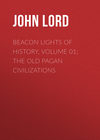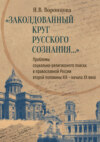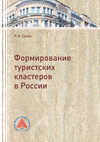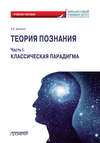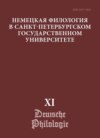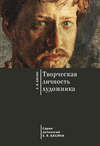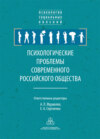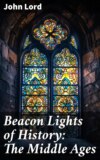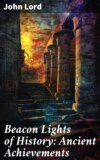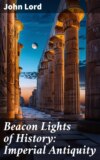Читать книгу: «Beacon Lights of History, Volume 01: The Old Pagan Civilizations»
PUBLISHERS' NOTE
In preparing a new edition of Dr. Lord's great work, the "Beacon Lights of History," it has been necessary to make some rearrangement of lectures and volumes. Dr. Lord began with his volume on classic "Antiquity," and not until he had completed five volumes did he return to the remoter times of "Old Pagan Civilizations" (reaching back to Assyria and Egypt) and the "Jewish Heroes and Prophets." These issued, he took up again the line of great men and movements, and brought it down to modern days.
The "Old Pagan Civilizations," of course, stretch thousands of years before the Hebrews, and the volume so entitled would naturally be the first. Then follows the volume on "Jewish Heroes and Prophets," ending with St. Paul and the Christian Era. After this volume, which in any position, dealing with the unique race of the Jews, must stand by itself, we return to the brilliant picture of the Pagan centuries, in "Ancient Achievements" and "Imperial Antiquity," the latter coming down to the Fall of Rome in the fourth century A.D., which ends the era of "Antiquity" and begins the "Middle Ages."
NEW YORK, September 15, 1902.
AUTHOR'S PREFACE
It has been my object in these Lectures to give the substance of accepted knowledge pertaining to the leading events and characters of history; and in treating such a variety of subjects, extending over a period of more than six thousand years, each of which might fill a volume, I have sought to present what is true rather than what is new.
Although most of these Lectures have been delivered, in some form, during the last forty years, in most of the cities and in many of the literary institutions of this country, I have carefully revised them within the last few years, in order to avail myself of the latest light shed on the topics and times of which they treat.
The revived and wide-spread attention given to the study of the Bible, under the stimulus of recent Oriental travels and investigations, not only as a volume of religious guidance, but as an authentic record of most interesting and important events, has encouraged me to include a series of Lectures on some of the remarkable men identified with Jewish history.
Of course I have not aimed at an exhaustive criticism in these Biblical studies, since the topics cannot be exhausted even by the most learned scholars; but I have sought to interest intelligent Christians by a continuous narrative, interweaving with it the latest accessible knowledge bearing on the main subjects. If I have persisted in adhering to the truths that have been generally accepted for nearly two thousand years, I have not disregarded the light which has been recently shed on important points by the great critics of the progressive schools.
I have not aimed to be exhaustive, or to give minute criticism on comparatively unimportant points; but the passions and interests which have agitated nations, the ideas which great men have declared, and the institutions which have grown out of them, have not, I trust, been uncandidly described, nor deductions from them illogically made.
Inasmuch as the interest in the development of those great ideas and movements which we call Civilization centres in no slight degree in the men who were identified with them, I have endeavored to give a faithful picture of their lives in connection with the eras and institutions which they represent, whether they were philosophers, ecclesiastics, or men of action.
And that we may not lose sight of the precious boons which illustrious benefactors have been instrumental in bestowing upon mankind, it has been my chief object to present their services, whatever may have been their defects; since it is for services that most great men are ultimately judged, especially kings and rulers. These services, certainly, constitute the gist of history, and it is these which I have aspired to show.
JOHN LORD.
ANCIENT RELIGIONS:
EGYPTIAN, ASSYRIAN, BABYLONIAN, AND PERSIAN
It is my object in this book on the old Pagan civilizations to present the salient points only, since an exhaustive work is impossible within the limits of these volumes. The practical end which I have in view is to collate a sufficient number of acknowledged facts from which to draw sound inferences in reference to the progress of the human race, and the comparative welfare of nations in ancient and modern times.
The first inquiry we naturally make is in regard to the various religious systems which were accepted by the ancient nations, since religion, in some form or other, is the most universal of institutions, and has had the earliest and the greatest influence on the condition and life of peoples–that is to say, on their civilizations–in every period of the world. And, necessarily, considering what is the object in religion, when we undertake to examine any particular form of it which has obtained among any people or at any period of time, we must ask, How far did its priests and sages teach exalted ideas of Deity, of the soul, and of immortality? How far did they arrive at lofty and immutable principles of morality? How far did religion, such as was taught, practically affect the lives of those who professed it, and lead them to just and reasonable treatment of one another, or to holy contemplation, or noble deeds, or sublime repose in anticipation of a higher and endless life? And how did the various religions compare with what we believe to be the true religion–Christianity–in its pure and ennobling truths, its inspiring promises, and its quiet influence in changing and developing character?
I assume that there is no such thing as a progressive Christianity, except in so far as mankind grow in the realization of its lofty principles; that there has not been and will not be any improvement on the ethics and spiritual truths revealed by Jesus the Christ, but that they will remain forever the standard of faith and practice. I assume also that Christianity has elements which are not to be found in any other religion,–such as original teachings, divine revelations, and sublime truths. I know it is the fashion with many thinkers to maintain that improvements on the Christian system are both possible and probable, and that there is scarcely a truth which Christ and his apostles declared which cannot be found in some other ancient religion, when divested of the errors there incorporated with it. This notion I repudiate. I believe that systems of religion are perfect or imperfect, true or false, just so far as they agree or disagree with Christianity; and that to the end of time all systems are to be measured by the Christian standard, and not Christianity by any other system.
The oldest religion of which we have clear and authentic account is probably the pure monotheism held by the Jews. Some nations have claimed a higher antiquity for their religion–like the Egyptians and Chinese–than that which the sacred writings of the Hebrews show to have been communicated to Abraham, and to earlier men of God treated of in those Scriptures; but their claims are not entitled to our full credence. We are in doubt about them. The origin of religions is enshrouded in mystical darkness, and is a mere speculation. Authentic history does not go back far enough to settle this point. The primitive religion of mankind I believe to have been revealed to inspired men, who, like Shem, walked with God. Adam, in paradise, knew who God was, for he heard His voice; and so did Enoch and Noah, and, more clearly than all, Abraham. They believed in a personal God, maker of heaven and earth, infinite in power, supreme in goodness, without beginning and without end, who exercises a providential oversight of the world which he made.
It is certainly not unreasonable to claim the greatest purity and loftiness in the monotheistic faith of the Hebrew patriarchs, as handed down to his children by Abraham, over that of all other founders of ancient religious systems, not only since that faith was, as we believe, supernaturally communicated, but since the fruit of that stock, especially in its Christian development, is superior to all others. This sublime monotheism was ever maintained by the Hebrew race, in all their wanderings, misfortunes, and triumphs, except on occasions when they partially adopted the gods of those nations with whom they came in contact, and by whom they were corrupted or enslaved.
But it is not my purpose to discuss the religion of the Jews in this connection, since it is treated in other volumes of this series, and since everybody has access to the Bible, the earlier portions of which give the true account not only of the Hebrews and their special progenitor Abraham, but of the origin of the earth and of mankind; and most intelligent persons are familiar with its details.
I begin my description of ancient religions with those systems with which the Jews were more or less familiar, and by which they were more or less influenced. And whether these religions were, as I think, themselves corrupted forms of the primitive revelation to primitive man, or, as is held by some philosophers of to-day, natural developments out of an original worship of the powers of Nature, of ghosts of ancestral heroes, of tutelar deities of household, family, tribe, nation, and so forth, it will not affect their relation to my plan of considering this background of history in its effects upon modern times, through Judaism and Christianity.
The first which naturally claims our attention is the religion of ancient Egypt. But I can show only the main features and characteristics of this form of paganism, avoiding the complications of their system and their perplexing names as much as possible. I wish to present what is ascertained and intelligible rather than what is ingenious and obscure.
The religion of Egypt is very old,–how old we cannot tell with certainty. We know that it existed before Abraham, and with but few changes, for at least two thousand years. Mariette places the era of the first Egyptian dynasty under Menes at 5004 B.C. It is supposed that the earliest form of the Egyptian religion was monotheistic, such as was known later, however, only to a few of the higher priesthood. What the esoteric wisdom really was we can only conjecture, since there are no sacred books or writings that have come down to us, like the Indian Vedas and the Persian Zend-Avesta. Herodotus affirms that he knew the mysteries, but he did not reveal them.
But monotheism was lost sight of in Egypt at an earlier period than the beginning of authentic history. It is the fate of all institutions to become corrupt, and this is particularly true of religious systems. The reason of this is not difficult to explain. The Bible and human experience fully exhibit the course of this degradation. Hence, before Abraham's visit to Egypt the religion of that land had degenerated into a gross and complicated polytheism, which it was apparently for the interest of the priesthood to perpetuate.
The Egyptian religion was the worship of the powers of Nature,–the sun, the moon, the planets, the air, the storm, light, fire, the clouds, the rivers, the lightning, all of which were supposed to exercise a mysterious influence over human destiny. There was doubtless an indefinite sense of awe in view of the wonders of the material universe, extending to a vague fear of some almighty supremacy over all that could be seen or known. To these powers of Nature the Egyptians gave names, and made them divinities.
The Egyptian polytheism was complex and even contradictory. What it lost in logical sequence it gained in variety. Wilkinson enumerates seventy-three principal divinities, and Birch sixty-three; but there were some hundreds of lesser gods, discharging peculiar functions and presiding over different localities. Every town had its guardian deity, to whom prayers or sacrifices were offered by the priests. The more complicated the religious rites the more firmly cemented was the power of the priestly caste, and the more indispensable were priestly services for the offerings and propitiations.
Of these Egyptian deities there were eight of the first rank; but the list of them differs according to different writers, since in the great cities different deities were worshipped. These were Ammon–the concealed god,–the sovereign over all (corresponding to the Jupiter of the Romans), whose sacred city was Thebes. At a later date this god was identified with Ammon Ra, the physical sun. Ra was the sun-god, especially worshipped at Heliopolis,–the symbol of light and heat. Kneph was the spirit of God moving over the face of the waters, whose principal seat of worship was in Upper Egypt. Phtha was a sort of artisan god, who made the sun, moon, and the earth, "the father of beginnings;" his sign was the scarabaeus, or beetle, and his patron city was Memphis. Khem was the generative principle presiding over the vegetable world,–the giver of fertility and lord of the harvest. These deities are supposed to have represented spirit passing into matter and form,–a process of divine incarnation.
But the most popular deity was Osiris. His image is found standing on the oldest monument, a form of Ra, the light of the lower world, and king and judge of Hades. His worship was universal throughout Egypt, but his chief temples were at Abydos and Philae. He was regarded as mild, beneficent, and good. In opposition to him were Set, malignant and evil, and Bes, the god of death. Isis, the wife and sister of Osiris, was a sort of sun goddess, representing the productive power of Nature. Khons was the moon god. Maut, the consort of Ammon, represented Nature. Sati, the wife of Kneph, bore a resemblance to Juno. Nut was the goddess of the firmament; Ma was the goddess of truth; Horus was the mediator between creation and destruction.
But in spite of the multiplicity of deities, the Egyptian worship centred in some form upon heat or fire, generally the sun, the most powerful and brilliant of the forces of Nature. Among all the ancient pagan nations the sun, the moon, and the planets, under different names, whether impersonated or not, were the principal objects of worship for the people. To these temples were erected, statues raised, and sacrifices made.
No ancient nation was more devout, or more constant to the service of its gods, than were the Egyptians; and hence, being superstitious, they were pre-eminently under the control of priests, as the people were in India. We see, chiefly in India and Egypt, the power of caste,–tyrannical, exclusive, and pretentious,–and powerful in proportion to the belief in a future state. Take away the belief in future existence and future rewards and punishments, and there is not much religion left. There may be philosophy and morality, but not religion, which is based on the fear and love of God, and the destiny of the soul after death. Saint Augustine, in his "City of God," his greatest work, ridicules all gods who are not able to save the soul, and all religions where future existence is not recognized as the most important thing which can occupy the mind of man.
We cannot then utterly despise the religion of Egypt, in spite of the absurdities mingled with it,–the multiplicity of gods and the doctrine of metempsychosis,–since it included a distinct recognition of a future state of rewards and punishments "according to the deeds done in the body." On this belief rested the power of the priests, who were supposed to intercede with the deities, and who alone were appointed to offer to them sacrifices, in order to gain their favor or deprecate their wrath. The idea of death and judgment was ever present to the thoughts of the Egyptians, from the highest to the lowest, and must have modified their conduct, stimulating them to virtue, and restraining them from vice; for virtue and vice are not revelations,–they are instincts implanted in the soul. No ancient teacher enjoined the duties based on an immutable morality with more force than Confucius, Buddha, and Epictetus. Who in any land or age has ignored the duties of filial obedience, respect to rulers, kindness to the miserable, protection to the weak, honesty, benevolence, sincerity, and truthfulness? With the discharge of these duties, written on the heart, have been associated the favor of the gods, and happiness in the future world, whatever errors may have crept into theological dogmas and speculations.
Believing then in a future state, where sin would be punished and virtue rewarded, and believing in it firmly and piously, the ancient Egyptians were a peaceful and comparatively moral people. All writers admit their industry, their simplicity of life, their respect for law, their loyalty to priests and rulers. Hence there was permanence to their institutions, for rapine, violence, and revolution were rare. They were not warlike, although often engaged in war by the command of ambitious kings. Generally the policy of their government was conservative and pacific. Military ambition and thirst for foreign conquest were not the peculiar sins of Egyptian kings; they sought rather to develop national industries and resources. The occupation of the people was in agriculture and the useful arts, which last they carried to considerable perfection, especially in the working of metals, textile fabrics, and ornamental jewelry. Their grand monuments were not triumphal arches, but temples and mausoleums. Even the pyramids may have been built to preserve the bodies of kings until the soul should be acquitted or condemned, and therefore more religious in their uses than as mere emblems of pride and power; and when monuments were erected to perpetuate the fame of princes, their supreme design was to receive the engraven memorials of the virtuous deeds of kings as fathers of the people.
The priests, whose business it was to perform religious rites and ceremonies to the various gods of the Egyptians, were extremely numerous. They held the highest social rank, and were exempt from taxes. They were clothed in white linen, which was kept scrupulously clean. They washed their whole bodies twice a day; they shaved the head, and wore no beard. They practised circumcision, which rite was of extreme antiquity, existing in Egypt two thousand four hundred years before Christ, and at least four hundred years before Abraham, and has been found among primitive peoples all over the world. They did not make a show of sanctity, nor were they ascetic like the Brahmans. They were married, and were allowed to drink wine and to eat meat, but not fish nor beans, which disturbed digestion. The son of a priest was generally a priest also. There were grades of rank among the priesthood; but not more so than in the Roman Catholic Church. The high-priest was a great dignitary, and generally belonged to the royal family. The king himself was a priest.
The Egyptian ritual of worship was the most complicated of all rituals, and their literature and philosophy were only branches of theology. "Religious observances," says Freeman Clarke, "were so numerous and so imperative that the most common labors of daily life could not be performed without a perpetual reference to some priestly regulation." There were more religious festivals than among any other ancient nation. The land was covered with temples; and every temple consecrated to a single divinity, to whom some animal was sacred, supported a large body of priests. The authorities on Egyptian history, especially Wilkinson, speak highly, on the whole, of the morals of the priesthood, and of their arduous and gloomy life of superintending ceremonies, sacrifices, processions, and funerals. Their life was so full of minute duties and restrictions that they rarely appeared in public, and their aspect as well as influence was austere and sacerdotal.
One of the most distinctive features of the Egyptian religion was the idea of the transmigration of souls,–that when men die; their souls reappear on earth in various animals, in expiation of their sins. Osiris was the god before whose tribunal all departed spirits appeared to be judged. If evil preponderated in their lives, their souls passed into a long series of animals until their sins were expiated, when the purified souls, after thousands of years perhaps, passed into their old bodies. Hence it was the great object of the Egyptians to preserve their mortal bodies after death, and thus arose the custom of embalming them. It is difficult to compute the number of mummies that have been found in Egypt. If a man was wealthy, it cost his family as much as one thousand dollars to embalm his body suitably to his rank. The embalmed bodies of kings were preserved in marble sarcophagi, and hidden in gigantic monuments.
The most repulsive thing in the Egyptian religion was animal-worship. To each deity some animal was sacred. Thus Apis, the sacred bull of Memphis, was the representative of Osiris; the cow was sacred to Isis, and to Athor her mother. Sheep were sacred to Kneph, as well as the asp. Hawks were sacred to Ra; lions were emblems of Horus, wolves of Anubis, hippopotami of Set. Each town was jealous of the honor of its special favorites among the gods.
"The worst form of this animal worship," says Rawlinson, "was the belief that a deity absolutely became incarnate in an individual animal, and so remained until the animal's death. Such were the Apis bulls, of which a succession was maintained at Memphis in the temple of Phtha, or, according to others, of Osiris. These beasts, maintained at the cost of the priestly communities in the great temples of their respective cities, were perpetually adored and prayed to by thousands during their lives, and at their deaths were entombed with the utmost care in huge sarcophagi, while all Egypt went into mourning on their decease."
Such was the religion of Egypt as known to the Jews,–a complicated polytheism, embracing the worship of animals as well as the powers of Nature; the belief in the transmigration of souls, and a sacerdotalism which carried ritualistic ceremonies to the greatest extent known to antiquity, combined with the exaltation of the priesthood to such a degree as to make priests the real rulers of the land, reminding us of the spiritual despotism of the Middle Ages. The priests of Egypt ruled by appealing to the fears of men, thus favoring a degrading superstition. How far they taught that the various objects of worship were symbols merely of a supreme power, which they themselves perhaps accepted in their esoteric schools, we do not know. But the priests believed in a future state of rewards and punishments, and thus recognized the soul to be of more importance than the material body, and made its welfare paramount over all other interests. This recognition doubtless contributed to elevate the morals of the people, and to make them religious, despite their false and degraded views of God, and their disgusting superstitions.
The Jews could not have lived in Egypt four hundred years without being influenced by the popular belief. Hence in the wilderness, and in the days of kingly rule, the tendency to animal worship in the shape of the golden calves, their love of ritualistic observances, and their easy submission to the rule of priests. In one very important thing, however, the Jews escaped a degrading superstition,–that of the transmigration of souls; and it was perhaps the abhorrence by Moses of this belief that made him so remarkably silent as to a future state. It is seemingly ignored in the Old Testament, and hence many have been led to suppose that the Jews did not believe in it. Certainly the most cultivated and aristocratic sect–the Sadducees–repudiated it altogether; while the Pharisees held to it. They, however, were products of a later age, and had learned many things–good and bad–from surrounding nations or in their captivities, which Moses did not attempt to teach the simple souls that escaped from Egypt.
Of the other religions with which the Jews came in contact, and which more or less were in conflict with their own monotheistic belief, very little is definitely known, since their sacred books, if they had any, have not come down to us. Our knowledge is mostly confined to monuments, on which the names of their deities are inscribed, the animals which they worshipped, symbolic of the powers of Nature, and the kings and priests who officiated in religious ceremonies. From these we learn or infer that among the Assyrians, Babylonians, and Phoenicians religion was polytheistic, but without so complicated or highly organized a system as prevailed in Egypt. Only about twenty deities are alluded to in the monumental records of either nation, and they are supposed to have represented the sun, the moon, the stars, and various other powers, to which were delegated by the unseen and occult supreme deity the oversight of this world. They presided over cities and the elements of Nature, like the rain, the thunder, the winds, the air, the water. Some abode in heaven, some on the earth, and some in the waters under the earth. Of all these graven images existed, carved by men's hands,–some in the form of animals, like the winged bulls of Nineveh. In the very earliest times, before history was written, it is supposed that the religion of all these nations was monotheistic, and that polytheism was a development as men became wicked and sensual. The knowledge of the one God was gradually lost, although an indefinite belief remained that there was a supreme power over all the other gods, at least a deity of higher rank than the gods of the people, who reigned over them as Lord of lords.
This deity in Assyria was Asshur. He is recognized by most authorities as Asshur, a son of Shem and grandson of Noah, who was probably the hero and leader of one of the early migrations, and, as founder of the Assyrian Empire, gave it its name,–his own being magnified and deified by his warlike descendants. Assyria was the oldest of the great empires, occupying Mesopotamia,–the vast plain watered by the Tigris and Euphrates rivers,–with adjacent countries to the north, west, and east. Its seat was in the northern portion of this region, while that of Babylonia or Chaldaea, its rival, was in the southern part; and although after many wars freed from the subjection of Assyria, the institutions of Babylonia, and especially its religion, were very much the same as those of the elder empire. In Babylonia the chief god was called El, or Il. In Babylon, although Bab-el, their tutelary god, was at the head of the pantheon, his form was not represented, nor had he any special temple for his worship. The Assyrian Asshur placed kings upon their thrones, protected their armies, and directed their expeditions. In speaking of him it was "Asshur, my Lord." He was also called "King of kings," reigning supreme over the gods; and sometimes he was called the "Father of the gods." His position in the celestial hierarchy corresponds with the Zeus of the Greeks, and with the Jupiter of the Romans. He was represented as a man with a horned cap, carrying a bow and issuing from a winged circle, which circle was the emblem of ubiquity and eternity. This emblem was also the accompaniment of Assyrian royalty.
These Assyrian and Babylonian deities had a direct influence on the Jews in later centuries, because traders on the Tigris pushed their adventurous expeditions from the head of the Persian Gulf, either around the great peninsula of Arabia, or by land across the deserts, and settled in Canaan, calling themselves Phoenicians; and it was from the descendants of these enterprising but morally debased people that the children of Israel, returning from Egypt, received the most pertinacious influences of idolatrous corruption. In Phoenicia the chief deity was also called Bel, or Baal, meaning "Lord," the epithet of the one divine being who rules the world, or the Lord of heaven. The deity of the Egyptian pantheon, with whom Baal most nearly corresponds, was Ammon, addressed as the supreme God.
Ranking after El in Babylon, Asshur in Assyria, and Baal in Phoenicia,–all shadows of the same supreme God,–we notice among these Mesopotamians a triad of the great gods, called Anu, Bel, and Hea. Anu, the primordial chaos; Hea, life and intelligence animating matter; and Bel, the organizing and creative spirit,–or, as Rawlinson thinks, "the original gods of the earth, the heavens, and the waters, corresponding in the main with the classical Pluto, Jupiter, and Neptune, who divided between them the dominion over the visible creation." The god Bel, in the pantheon of the Babylonians and Assyrians, is the God of gods, and Father of gods, who made the earth and heaven. His title expresses dominion.
In succession to the gods of this first trio,–Anu, Bel, and Hea,–was another trio, named Siu, Shamas, and Vul, representing the moon, the sun, and the atmosphere. "In Assyria and Babylon the moon-god took precedence of the sun-god, since night was more agreeable to the inhabitants of those hot countries than the day." Hence, Siu was the more popular deity; but Shamas, the sun, as having most direct reference to physical nature, "the lord of fire," "the ruler of the day," was the god of battles, going forth with the armies of the king triumphant over enemies. The worship of this deity was universal, and the kings regarded him as affording them especial help in war. Vul, the third of this trinity, was the god of the atmosphere, the god of tempests,–the god who caused the flood which the Assyrian legends recognize. He corresponds with the Jupiter Tonans of the Romans,–"the prince of the power of the air," destroyer of crops, the scatterer of the harvest, represented with a flaming sword; but as god of the atmosphere, the giver of rain, of abundance, "the lord of fecundity," he was beneficent as well as destructive.
Покупайте книги и получайте бонусы в Литрес, Читай-городе и Буквоеде.
Участвовать в бонусной программе
